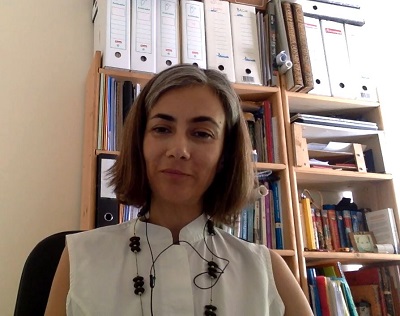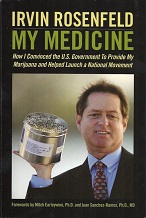With legal cannabis access expanding in the United States, it’s safe to assume that the pot you buy is on the up and up, right?
In most cases, yes, but too many continue to fail tests and go misrepresented on the market. This can range from flower being moldy to mislabeled. In other cases, flower can be contaminated. In recent years, tests of products resulted in failures for a slew of products. This includes a 2018 occurrence when nearly a fifth of California’s cannabis products failed testing.[1][2]
Many concerns have been brought up concerning the testing of products. They range from the high cost of lab testing to the number of available labs to regulations, like California’s, making products very difficult to approve.
Aaron Riley is the president of Cannasafe, the country’s first accredited lab in cannabis. Since 2012, Riley and Cannasafe have seen the evolution of the market and its products. He noted that consumers who visit accredited dispensaries are likely going to find products that are lab tested and have had their contents confirmed prior to sale. [3]
Riley explained that track and trace technology has done a great job at allowing retailers and consumers to know where their plant has been on the supply chain. That said, the technology still has workarounds that some have abused. “There’s a lot of misconceptions or people kept trying to mislead consumers…where a brand has a license, but they have, kind of, a split operation. Half of it is legal, half of it’s not.”
Less than reputable sellers and certain delivery services go hand-in-hand. Unlike an accredited dispensary, some delivery services do not adhere to the same standards as other retailers must. Riley considers these companies “sketchy actors” that will buy from non-approved vendors, giving consumers an increased risk of buying mislabeled or contaminated pot products.
There is one option to stifling this activity, according to Riley, but it comes at a cost. That is regulation. He said that many current markets have low risks and high rewards for sketchy actors. “You don’t have to pay any taxes…You don’t really have any expenses other than you make it, you sell it, you pay your bills or whatever your cost to produce,” Riley said.
He added that only one-eighth of California’s current market is compliant.
John Roulac is the founder and chief hemp officer at RE Botanicals, a USDA certified hemp-derived CBD company. He said that change can come from consumers demanding certain products. He also noted change could come if investors and executives realized there is no plan B. “It’s time we honor mother earth,” said Roulac.[4]
Roulac added, “More farmers are focusing on soil health. It’s time for the THC and hemp industry to honor the earth and do the right thing.” He said this includes, “Relying on yesterday’s sunlight; synthetic chemicals to grow crops from corn to cannabis damages our soils, our oceans, our climate and peoples’ health.”
Cannasafe does its part by testing portions of its clients’ products. Riley explained that Cannasafe tests client products for pesticides, metals and other contaminants that could make a product fail its state-mandated safety test. He also explained how a future with compliant cannabis could positively impact the consumer and the industry. “The cool thing about if everyone did follow the rules…there’s not really even a need for recalls, because if a product has failed at the distribution level, it never goes to retailers.”
Exceptional progress has come about in recent years, despite more needing to be done. Riley noted that 70 percent of products were failing just a few years ago. Today, the number has declined significantly to single-digit percentages.
Why do companies continue to fail tests? There is a combination of reasons, according to Riley. He lumps most into three categories. Either the company is new and may not have fully vetted its cultivation and supply chain. In some cases, the company can be like a customer and simply get ripped off. He explained that misrepresenting products happens between sellers and producers just like it does to consumers.
A product may find itself in the last category due to random occurrences. Factors from water leaks in roofs to contaminants in the gutter system can trigger a failure. In those cases, Riley said the failure is often one-off and corrected by the producer soon enough.
Testing varies by state as well. “California always goes above and beyond,” said Riley. He mentioned that states like Colorado once had “terrible testing” but are now hoping to “beef it up.” He also noted that Oregon and Massachusetts have “good” testing while Florida has yet to come up with regulations for its medical market.
Riley added that while there are no federal testing standards, newer states have some road map to follow. “Typically every state that comes online, like Pennsylvania, Ohio, these newer states typically have good regulations because they followed, or generally follow, what, kind of, the current standard is.”
Testing should continue to improve thanks to sophisticated operators joining the field, according to Riley. These people should help bring a standard that makes cannabis products not only more compliant but also uniform. With hope, consumers will be able to buy GSC in California, Florida or any other legal markets and have it taste and feel the same, just like major brands like Coca-Cola have done throughout the years.
References
- ^ flower being moldy (hightimes.com)
- ^ failed testing (mjbizdaily.com)
- ^ Cannasafe (csalabs.com)
- ^ RE Botanicals (www.rebotanicals.com)
Read more https://hightimes.com/health/is-legal-weed-necessarily-safe-weed/
Latest
Coronavirus Strikes Massachusetts Cannabis Company Employees
Reassessing the Essential: Cannabis in the Time of a Pandemic
5 Reasons To Try Aspen Valley CBG Flower (30% Off)
High Times Cannabis Cups Go Virtual In Wake Of Coronavirus Pandemic
Drug Enforcement Administration Proposes Plan To Expand Cannabis Research
Ghana Legalizes Cannabis For Medicinal And Industrial Uses
The cheapest legal weed in Canada: Discover these cannabis ‘value brands’
Cannabis and coronavirus: Here’s what you need to know
cannabis designs
The Best Of
WHO Rules CBD Should Not Be a Scheduled Drug

Dr Cristina Sanchez PhD video interview on medical marijuana and cancer

Biochemist Dennis Hill interview; Cannabis oil as a cure for cancer.

The unofficial World Record holder for cannabis smoking part 1





